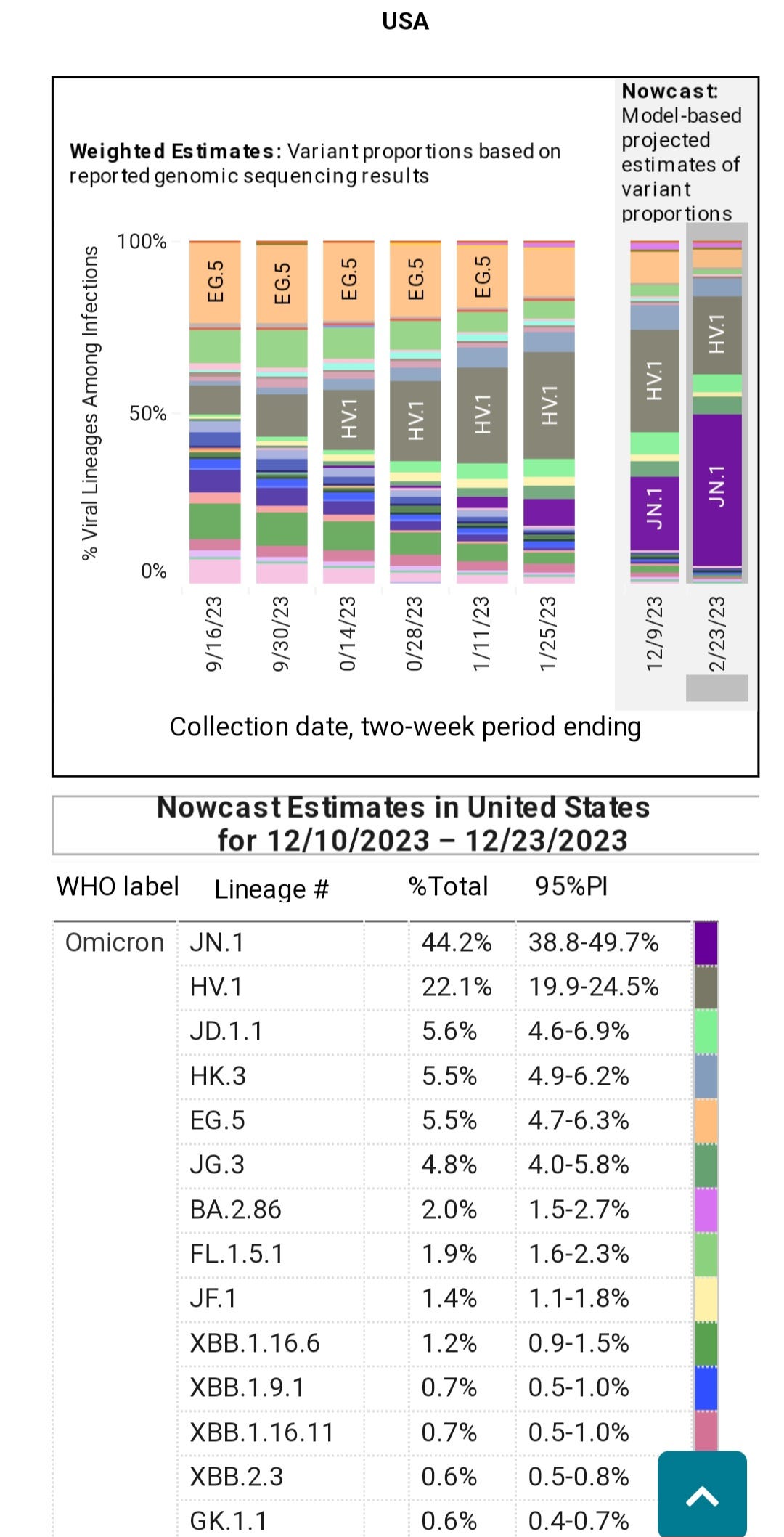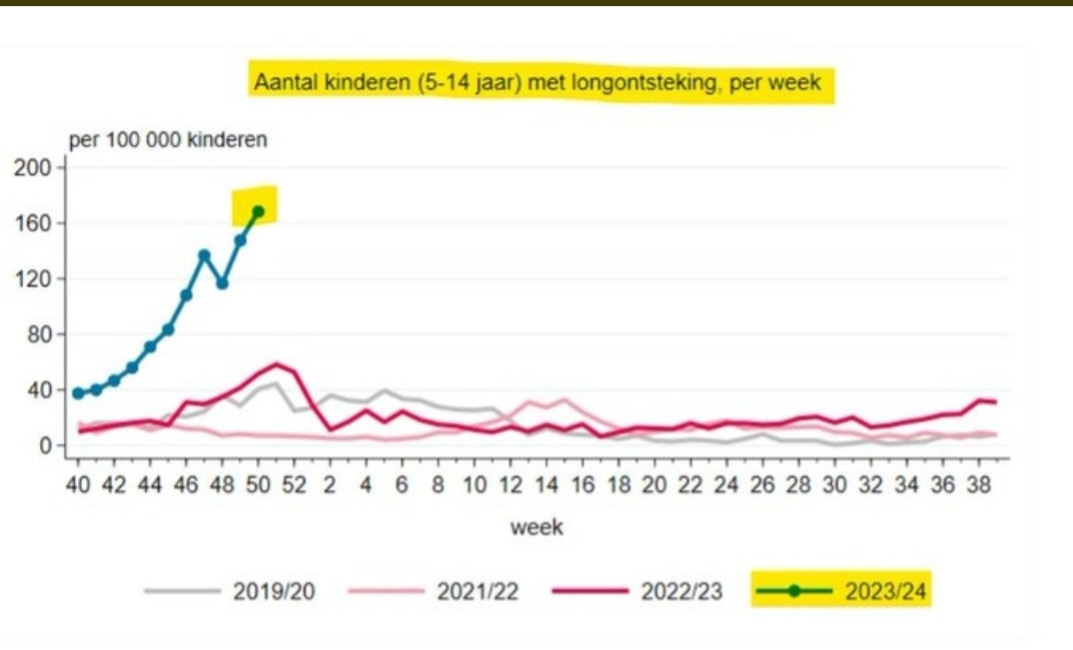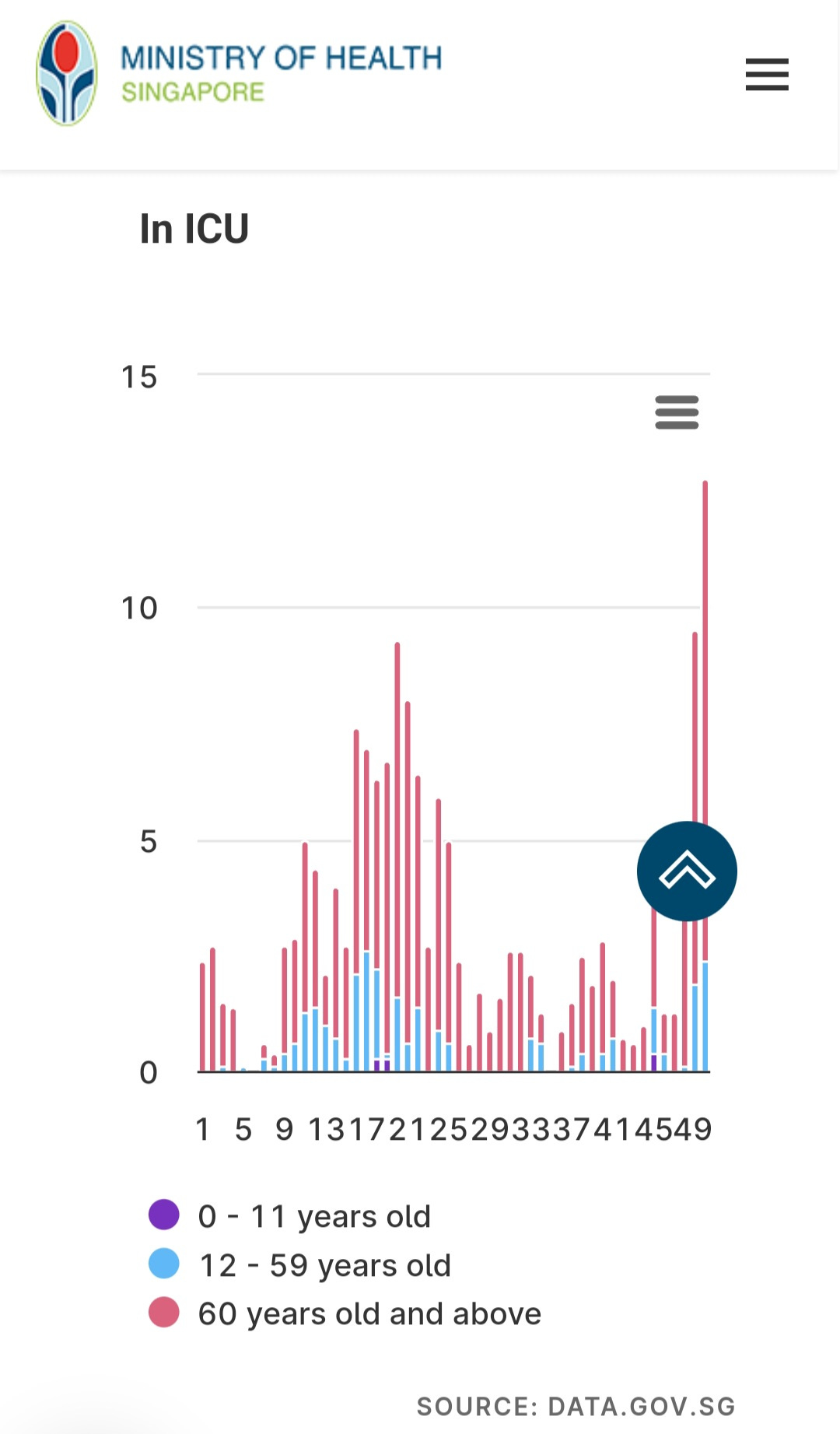JN.1 Takes Center Stage: JN.1 Dominance, A New JN.1/XBB Recombinant Variant, Pertussis Resurgence, Pneumonia Challenges and Global Implications
JN.1's Influence on Coinfections: Strengthening the Link Between COVID and Other Pathogens
JN.1, an exceptional variant with distinct antigens compared to the XBB variants, is making a significant impact. Alongside its descendants, including JN.1.1, JN.1.1.1, JN.2 through JN.10, and a new recombinant variant, JN.1.1.1 and XBB, it has become a global force, driving infections to unprecedented levels worldwide. Consequently, hospitalizations and ICU admissions are on the rise.
With the upcoming busy travel season, it's vital to recognize that without effective mitigation measures, various modes of transportation, such as airplanes, trains, subways, buses, and cars, could become significant hubs for transmission. This, in turn, could contribute to the further spread of the latest variants.
As the JN.1 variants spread rapidly, the cases of pneumonia are also surging at an alarming rate, reaching record levels in multiple countries. It's crucial to stay informed and take necessary precautions.
The BA.2.86 (Pirola) family of variants, featuring JN.1 and its descendants, now constitutes over 50% of cases in the U.S., with certain states surpassing 70%. A glance at the global scenario reveals the dominance of the BA.2.86 family of variants. Notably, these variants are among the most immune-evasive and suppressive observed so far. This raises concerns about heightened probabilities of persistent infections and an uptick in secondary infections. Staying vigilant and implementing preventive measures becomes increasingly crucial in the face of these challenges
In Denmark, the prevalence of JN.1 had increased above 40% prevalence by the end of November. By November 29, 2023 Denmark declared an epidemic of mycoplasma pneumoniae. There was an article from Denmark that said, “The disease often presents itself with mild flu-like symptoms, including fatigue, headache, sore throat, and prolonged dry cough, especially at night. While most individuals experience fever, it is often not as high as that seen in influenza and other more typical pneumonia cases. This has led to the nicknames ‘walking pneumonia’ or ‘atypical pneumonia,’ as conventional penicillin has no effect on the infection.” Another reason antibiotics won’t work is if the infection isn’t a bacterial infection, but instead a viral infection.
Similar symptoms are observed in individuals infected with COVID. In India, a former AIIMS director and senior pulmonologist, Dr Randeep Guleria, reported that “most of the symptoms are predominantly in the upper airways, like fever, cough, cold, sore throat, running nose and body aches,” as reported by gulfnews.com December 24, 2023.
According to the CDC: "The amount of respiratory illness (fever plus cough or sore throat ) causing people to seek healthcare is elevated or increasing across most areas of the U.S."
We don’t know how many of these cases were confirmed mycoplasma pneumoniae or how many of these were diagnosed based on symptoms. Given the rapid global spread of identical symptoms, coinciding with the exponential growth of the Pirola family and the associated changes with JN.1, the connection is apparent.
The World Health Organization (W.H.O.) reported a 52% increase in the global number of new COVID-19 cases in the last month. In the latest epidemiological update on Friday, the UN health body documented over 850,000 new cases worldwide in the 28-day period from November 20 to December 17.
Prepare for an in-depth exploration as we unveil additional evidence and delve into the intricacies of the latest recombinant variant, born from a JN.1 offspring and an XBB variant. This new variant boasts an estimated growth advantage that surpasses JN.1 by an estimated 26%. Our journey will scrutinize the potential implications of the JN.1 variant, examining its capacity to lead to more severe outcomes, including the increase of bacterial pneumonia being seen around the world. Join us as we dig deeper into the evolving landscape of these variants and their impact on public health.
The research requires extensive time and effort to uncover crucial insights. By becoming a paid subscriber, you're not only gaining access to exclusive content but also actively supporting the future of this important work. Contribute to our mission by becoming a valued paid subscriber today.
The European Centre for Disease Control and Prevention (ECDC) that has been monitoring the increased circulation of mycoplasma in Europe, with a spike in infections reported by six countries: France, the Netherlands, Ireland, Denmark, Sweden and Norway. The same countries with the higher prevalence of JN.1.
JN.1 may be more likely to infect the respiratory tract and the lungs, either causing these symptoms and/or opening the door to bacterial infections. We discussed how this variants changes impact it more in a prior article that you can read here.
‘Carlos Rodrigo, a member of the Spanish Society of Pediatric Infectology (SEIP)”, said “The bacteria can colonize the pharynx asymptomatically. Up to 20% of the population has it without suffering any problems until some factor such as cold, or a viral infection creates the conditions that facilitate its descent into the lungs. That’s why it is not surprising that countries in northern Europe or areas of China with a similar climate have detected this increase in infections first.”
In the ECDC, Communicable Disease Threats Report for Week 49, covering Dec. 3 - 9, 2023, a stark revelation emerges: "SARS-CoV-2 continued to circulate at higher levels than seasonal influenza and respiratory syncytial virus (RSV)." It's a distinctive reminder that we're not dealing with the flu. The ECDC emphasizes that "Non-sentinel hospital admissions, ICU admissions, and deaths due to influenza remain low."
Turning attention to COVID, the report notes a concerning trend: "severity indicators, hospital admissions, ICU rates, and death rates have gradually increased since week 36, 2023, especially in the 65 years and above age group." Week 36 marked the ascent of BA.2.86.1 and JN.1 (BA.2.86.1.1), gaining traction and accelerating the spread. The ECDC's graph, updated through December 4, 2023, unveils a striking shift in Denmark. From comprising 2.7% of cases in week 36, BA.2.86 variants surged to over 40% by week 47.
The ECDC's summary of the mycoplasma pneumoniae situation in the EU/EEA is equally noteworthy, indicating that "six EU/EEA countries have reported recent increases in M. pneumoniae infections at the national level (Denmark, France, Ireland, the Netherlands, Norway, Sweden) or in specific hospitals. Increases have been reported in all age groups but are predominantly observed in children and adolescents." The evolving landscape demands a closer examination of the factors at play.
Below, the Lancet published a paper that included the graph of Pertussis in Denmark, from 2010 through the end of November 2023.
A notable surge began in July 2019, likely exacerbated by the initial COVID surge, only to be curtailed by global mitigation efforts.
Fast forward to November 2023, and we witness a resurgence not just in pertussis but also in mycoplasma pneumonia and streptococcus pneumonia. It appears that bacteria are seizing the opportunity presented by the weakened immune system induced by JN.1 variants.
The Netherlands is also experiencing a continuous climb in not only pertussis cases beyond previous years, but also mycoplasma pneumonia, strongly suggesting a link to JN.1-driven immune suppression.
The critical question emerges: Is JN.1 more severe?
The ECDC report offers a clue, stating, "Additionally, one country observed an increase in severe cases admitted to the intensive care unit." Understanding the tendency for more severe outcomes in cases of coinfections involving COVID and other viruses or bacteria, it becomes apparent that while the JN.1 variant itself may not inherently be more severe, its unparalleled immune evasion and suppression could contribute to more serious outcomes when coupled with other pathogens. This calls for a nuanced examination of the interplay between JN.1 and coinfections in shaping the current health landscape.
Germany
A new variant has arisen in the evolution of COVID-19.
JN.1 is the currently circulating global dominant variant. JN.1.1.1 has a 9% growth advantage over JN.1.
The latest addition to the viral landscape is the JN.1.1.1/XBB recombinant variant, identified as XDK, showcasing an estimated 25% growth advantage over JN.1. The sequencing of 18 cases, 10 of which occurred in the past 10 days, indicates an accelerating pace of spread, emanating from France. The mutations residing in the virus's body, rather than the spike, suggest adaptation around T-cell responses.
This evolutionary trend is rapidly gaining momentum, as evidenced by sequencing in France, the U.S., Ireland, and Belgium, with a majority of cases originating in France. This points to a growth advantage over JN.1, thriving in its dominated environment. These variants stand as the most immune-evasive and suppressive to date, heightening the likelihood of persistent infections, often leading to Long-COVID.
As we are in the midst of a record-breaking travel period, the absence of mitigation measures in travel may propel the spread of these variants. It's crucial to note that there is a >95% chance of infectiousness on any single flight with one of the latest variants, emphasizing the importance of taking necessary precautions.
During this holiday season, let's reflect on the profound impact of global inaction in mitigating the transmission of COVID-19. The consequences are steep — potentially millions of new cases of Long COVID, hundreds of thousands of hospitalizations during and after the holidays, and tens of thousands paying the ultimate price worldwide. It's crucial to exercise consideration for our fellow humans. Take steps to prevent transmission, recognizing that even if you may be unaffected, the ripple effect could harm others. We must work Together Against COVID Transmission (T.A.C.T.) Let us unite in this effort.
Wishing you Happy Holiday season from T.A.C.T. Be vigilant and stay safe.🙏
Join our campaign to champion policies and systems that fortify our schools, safeguarding children and, in turn, preserving the health of our communities, bolstering the economy, and securing the future. Your support can make a lasting impact on the well-being and prosperity of generations to come. Click HERE or on the graphic below for more information.
Please share anything that doesn’t look correct, any insights or any questions you may have. Let us know what is happening where you are.















Looks like this beast is headed in the direction of MERS which is bad.
Trouble this way comes.
Hi TACT...
Don't know if you'll see this, but an interesting paper...
https://www.medrxiv.org/content/10.1101/2024.01.17.24301374v1